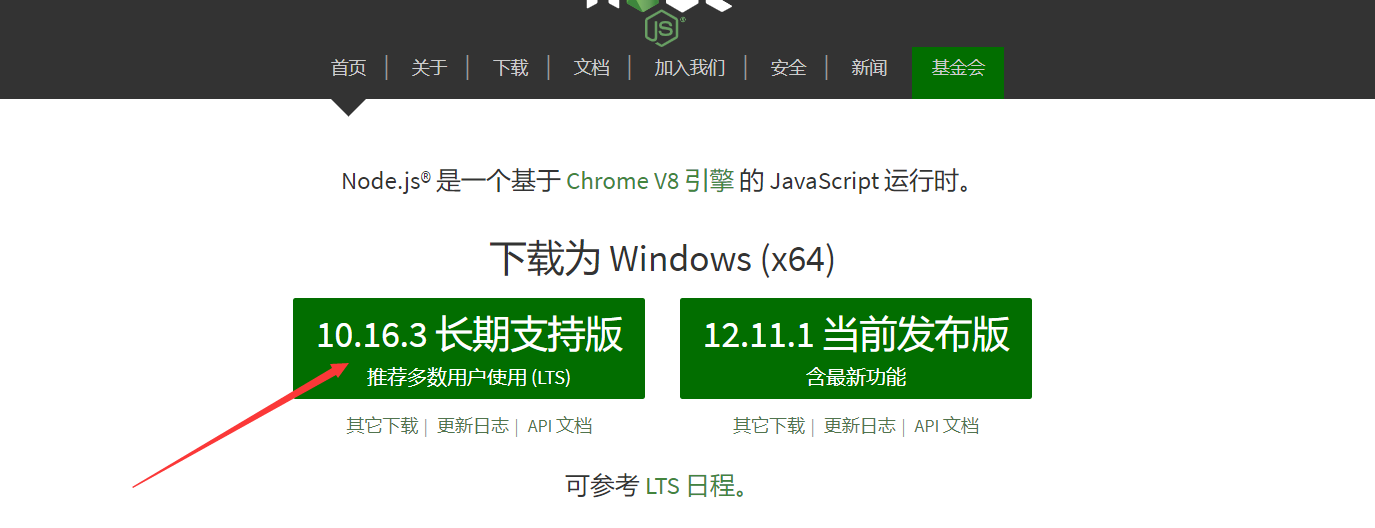再探vue
- 2019 年 10 月 11 日
- 筆記
1. vue項目搭建
搭建vue環境需要安裝node軟體,node是由c++編寫而成,主要運行js文件或者js程式碼的,安裝node會自動安裝一個管理器叫npm,建議換源下載,國外的網站較慢(比如cnpm,這個叫淘寶源),最後下載vue
1. 下載node
官網下載安裝包,傻瓜式安裝:https://nodejs.org/zh-cn/

2. 換源安裝cnpm
npm install -g cnpm –registry=https://registry.npm.taobao.org

3. 安裝腳手架
cnpm install -g @vue/cli

註:2或3終端安裝失敗時,可以清空 npm快取 再重複執行失敗的步驟
npm cache clean –force
2. 創建項目
1. 進入存放項目的目錄
cd 項目的路徑
2. 創建項目 vue create 項目名
3. 項目初始化

3. vue項目目錄結構分析
├── v-proj | ├── node_modules // 當前項目所有依賴,一般不可以移植給其他電腦環境 | ├── public | | ├── favicon.ico // 標籤圖標 | | └── index.html // 當前項目唯一的頁面 | ├── src | | ├── assets // 靜態資源img、css、js | | ├── components // 小組件 | | ├── views // 頁面組件 | | ├── App.vue // 根組件 | | ├── main.js // 全局腳本文件(項目的入口) | | ├── router.js // 路由腳本文件(配置路由 url鏈接 與 頁面組件的映射關係) | | └── store.js // 倉庫腳本文件(vuex插件的配置文件,數據倉庫) | ├── README.md └ └── **配置文件
4. vue組件由哪幾部分組成
<template> // template裡面有且只能有一個標籤 <div></div> </template> <script> export default { name: "text" } </script> <style scoped> // scoped是樣式的組件化 </style> 1) template:有且只有一個根標籤 2) script:必須將組件對象導出 export default {} 3) style: style標籤明確scoped屬性,代表該樣式只在組件內部起作用(樣式的組件化)
5. 全局腳本文件main.js(項目入口)
在node_moduls library root 模組中導入以下模組 import Vue from 'vue' import App from './App.vue' import router from './router' import store from './store' Vue.config.productionTip = false // 項目的一些新手提示 new Vue({ router, store, render: h => h(App) }).$mount('#app') // 相當於掛載點 上面可改為: import Vue from 'vue' // 載入vue環境 import App from './App.vue' // 載入根組件 import router from './router' // 載入路由環境 import store from './store' // 載入數據倉庫環境 Vue.config.productionTip = false new Vue({ el: '#app', router, store, render: function (readFn) { return readFn(App); // 將組件文件讀成字元串形式,渲染掛載點 }, });
6. vue項目啟動生命周期與頁面組件的運用
請求過程 1) 載入mian.js啟動項目 i) import Vue from 'vue' 為項目載入vue環境 ii) import App from './App.vue' 載入根組件用於渲染替換掛載點 iii) import router from './router' 載入路由腳本文件,進入路由相關配置 2) 載入router.js文件,為項目提供路由服務,並載入已配置的路由(鏈接與頁面組件的映射關係) 註:不管當前渲染的是什麼路由,頁面渲染的一定是根組件,鏈接匹配到的頁面組件只是替換根組件中的 <router-view></router-view> 這個標籤有vue.router進行提供, 比如我們走red這個路由, 自然而然的會拿出RegPage這個組件,他就會把PegPage這個組件替換成<router-view></router-view>, 如果走blue這個路由, 他就會拿出BluePage這個組件來進行替換RedPage這個組件, 進而實現頁面的跳轉 3) 如果請求鏈接改變(路由改變),就會匹配新鏈接對應的頁面組件,新頁面組件會替換渲染router-view標籤,替換掉之前的頁面標籤(就是完成了頁面跳轉)
參與文件
main.js: 該文件內容不變
App.vue
<template> <div id="app"> <!-- url路徑會載入不同的頁面組件 eg:/red => RegPage | /blue => BluePage 來替換router-view標籤,完成頁面的切換 --> <router-view></router-view> </div> </template>
views/RedPage.vue
<template> <div class="red-page"> <Nav></Nav> </div> </template> <script> import Nav from '@/components/Nav' export default { name: "RedPage", components: { Nav }, } </script> <style scoped> .red-page { width: 100vw; // vw 相對於視窗的寬度: 視窗的寬度為100vw height: 100vh; // vh 相對於視窗的高度,: 視窗的高度是100vh background-color: red; } </style> 拓展: vm : 相對於視窗的寬度或高度, 取決於哪個更小
views/BluePage.vue
<template> <div class="blue-page"> <Nav></Nav> // 導航欄 </div> </template> <script> import Nav from '@/components/Nav' export default { name: "BluePage", components: { Nav } } </script> <style scoped> .blue-page { width: 100vw; height: 100vh; background-color: blue; } </style>
router.js
import Vue from 'vue' import Router from 'vue-router' import Home from './views/Home.vue' import RedPage from "./views/RedPage"; import BluePage from "./views/BluePage"; Vue.use(Router); export default new Router({ mode: 'history', base: process.env.BASE_URL, routes: [ { path: '/', name: 'home', component: Home }, { path: '/red', name: 'red', component: RedPage }, { path: '/blue', name: 'blue', component: BluePage } ] })
7.全局樣式文件配置
assets/css/global.css
html, body, h1, h2, ul, p { margin: 0; padding: 0; } ul { list-style: none; } a { color: black; text-decoration: none; } // list-style屬性是設置list-style-type, list-style-image 和 list-style-position的簡寫屬性
main.js中新增
// 配置全局樣式 import '@/assets/css/global.css'
8. 封裝小組件==> Nav導航欄組件
components/Nav.vue
<template> <div class="nav"> <!--採用vue-router完成頁面跳轉,不能採用a標籤(會發生頁面刷新,本質就是重新載入了一次項目介面)--> <ul> <li> <!--<a href="/">主頁</a>--> <router-link to="/">主頁</router-link> // to就相當於href </li> <li> <router-link to="/red">紅頁</router-link> </li> <li> <router-link to="/blue">藍頁</router-link> </li> </ul> </div> </template> <script> export default { name: "Nav", } </script> <style scoped> .nav { width: 100%; height: 60px; background-color: orange; } .nav li { float: left; font: normal 20px/60px '微軟雅黑'; // 子重/字體大小/height/ 字體 padding: 0 30px; } .nav li:hover { cursor: pointer; background-color: aquamarine; } .nav li.active { // 默認哪一個是選中的, 選中哪個渲染哪個 cursor: pointer; background-color: aquamarine; } </style>
views/HomePage.vue: RedPage.vue與BluePage都是添加下方三個步驟程式碼
<template> <div class="home"> <!-- 3)使用Nav組件 --> <Nav></Nav> </div> </template> <script> // 1)導入Nav組件 import Nav from '@/components/Nav' export default { // 2)註冊Nav組件 components: { Nav, } } </script>
新增頁面三步驟
1. 在views文件夾中創建視圖組件 2. 在router.js文件中配置路由 3. 設置路由跳轉,在指定路由下渲染該組件(替換根組件中的router-view標籤)
views/ TanPage.vue
<template> <div class="tan-page"> <Nav></Nav> </div> </template> <script> import Nav from '@/components/Nav' export default { name: "TanPage", components: { Nav } } </script> <style scoped> .tan-page { width: 100vw; height: 100vh; background-color: tan; } </style>
router.js
import TanPage from "./views/TanPage"; export default new Router({ mode: 'history', base: process.env.BASE_URL, routes: [ // ... { path: '/tan', name: 'tan', component: TanPage } ] })
components/Nav.vue
<li> <router-link to="/tan">土頁</router-link> </li>
9. 組件生命周期鉤子
1)一個組件從創建到銷毀的整個過程,就稱之為組件的生命周期 2)在組件創建到銷毀的過程中,會出現眾多關鍵的時間節點,如 組件要創建了、組件創建完畢了、組件數據渲染完畢了、組件要被銷毀了、組件銷毀完畢了 等等時間節點,每一個時間節點,vue都為其提供了一個回調函數(在該組件到達該時間節點時,就會觸發對應的回調函數,在函數中就可以完成該節點需要完成的業務邏輯) 3)生命周期鉤子函數就是 vue實例 成員
任何一個組件: 在vue組件的script的export default 導出字典中直接寫鉤子函數
export default { // ... beforeCreate() { console.log('組件創建了,但數據和方法還未提供'); // console.log(this.$data); // console.log(this.$options.methods); console.log(this.title); console.log(this.alterTitle); }, // 該鉤子需要掌握,一般該組件請求後台的數據,都是在該鉤子中完成 // 1)請求來的數據可以給頁面變數進行賦值 // 2)該節點還只停留在虛擬DOM範疇,如果數據還需要做二次修改再渲染到頁面, // 可以在beforeMount、mounted鉤子中添加邏輯處理 created() { console.log('組件創建了,數據和方法已提供'); // console.log(this.$data); // console.log(this.$options.methods); console.log(this.title); console.log(this.alterTitle); console.log(this.$options.name); }, destroyed() { console.log('組件銷毀完畢') } }
10. 根據請求路徑高亮路由標籤案例
1) router-link會被解析為a標籤,用to完成指定路徑跳轉,但是不能添加系統事件(因為是組件標籤) 2) 在js方法中可以用 this.$router.push('路徑') 完成邏輯跳轉 3) 在js方法中可以用 this.$route.path 拿到當前請求的頁面路由
components/Nav.vue
<template> <div class="nav"> <!--採用vue-router完成頁面跳轉,不能採用a標籤(會發生頁面刷新,本質就是重新載入了一次項目介面)--> <ul> <li @click="changePage('/')" :class="{active: currentPage === '/'}"> <!--<a href="/">主頁</a>--> <!--<router-link to="/">主頁</router-link>--> 主頁 </li> <li @click="changePage('/red')" :class="{active: currentPage === '/red'}"> <!--<router-link to="/red">紅頁</router-link>--> 紅頁 </li> <li @click="changePage('/blue')" :class="{active: currentPage === '/blue'}"> <!--<router-link to="/blue">藍頁</router-link>--> 藍頁 </li> <li @click="changePage('/tan')" :class="{active: currentPage === '/tan'}"> <!--<router-link to="/tan">土頁</router-link>--> 土頁 </li> </ul> </div> </template> <script> export default { name: "Nav", data() { return { // 沒渲染一個頁面,都會出現載入Nav組件,currentPage就會被重置, // 1)在點擊跳轉事件中,將跳轉的頁面用 資料庫 保存,在鉤子函數中對currentPage進行數據更新 // currentPage: localStorage.currentPage ? localStorage.currentPage: '' // 2)直接在created鉤子函數中,獲取當前的url路徑,根據路徑更新currentPage currentPage: '' } }, methods: { changePage(page) { // console.log(page); // 當Nav出現渲染,該語句就無意義,因為在data中將currentPage重置為空 // this.currentPage = page; // 有bug,用戶不通過點擊,直接修改請求路徑完成頁面跳轉,資料庫就不會更新數據 // localStorage.currentPage = page; // 任何一個標籤的事件中,都可以通過router完成邏輯條件 // console.log(this.$route); // 管理路由數據 // console.log(this.$router); // 管理路由跳轉 this.$router.push(page); // 路由的邏輯跳轉 } }, // 當前組件載入成功,要根據當前實際所在的路徑,判斷單選激活標籤 created() { // console.log(this.$route.path); this.currentPage = this.$route.path; } } </script> <style scoped> .nav { width: 100%; height: 60px; background-color: orange; } .nav li { float: left; font: normal 20px/60px '微軟雅黑'; padding: 0 30px; } .nav li:hover { cursor: pointer; background-color: aquamarine; } .nav li.active { cursor: pointer; background-color: aquamarine; } </style>
